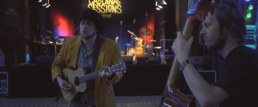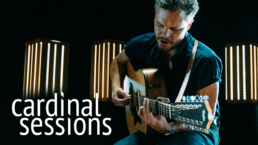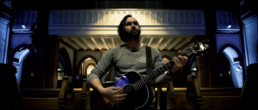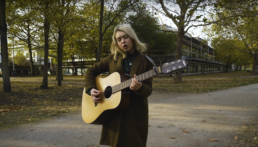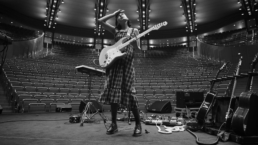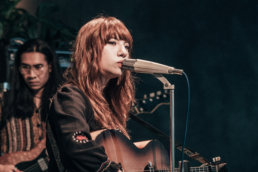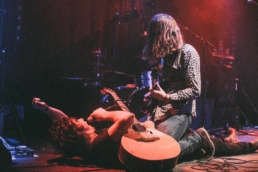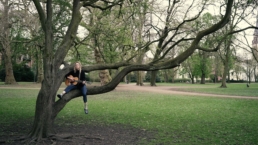How to record an acoustic session – Cardinal Sessions
We will show you how to record an acoustic session and which gear you will need to record awesome audio and video.
Since this is a quite complex tutorial we devided it into three essential chapters: Find the perfect Location, Recording Audio & Recording Video. You can find affiliate links to all the audio and video gear that we are using at the end of the article.
Which location to choose for an acoustic session?
Finding a Location – What to consider. Finding a perfect location might be more difficult than you think since there is lots of different parameters you have to be aware of. First of all there is nothing worse for recording an acoustic session than having loud noises like rushing cars, construction sites, airplanes and yelling people around you. Especially when you record in a big city you will definitely have these problems as soon as you will put your headphones on for your first soundcheck. Above all, talking people can make your recording interesting or unuseable. So always remember you won’t be able to just filter out certain frequences without affecting the sound of the voice, guitar etc.
When it comes to aspects of filming you might want to fit the music and the artist into the setting. Filming a folk band singing about the countryside in a small white cellar room with nothing in it but bright fluorescent lights, instead of making them stand in a beautiful natural landscape with wide background at sunset (blue hour), might not be the best idea except you are aiming for the highest contrast possible.
How to record audio for an acoustic session? What gear to use?
Recording audio – What to consider. The easiest setting possible is one artist singing and playing guitar at the same time. Honestly, all you need is a tripod and a recording device like the Zoom H6 or Zoom H4 -without additional mics connected to it- pointing towards the artists head. Always use it with a windshield on, you never know when there is a small breeze coming up that might ruin your audio with wind artefacts. As long as the artist is able to perform harmonicly when it comes to guitar and voice volume you are good to go. Always remember to soundcheck the loudest part of the song to avoid peaking.
A more complex setting. But what if there is is a band playing many different instruments like guitar, bass, drums and violin? To make sure to record proper vocals without disrupting drums, guitar etc. you should use a lavalier mic like the d:screet™ 4061 Omnidirectional Microphone by DPA. In connection with the Zoom H6 recorder for atmo sound and additional directional microphones, to filter sorrounding noises, like the Rode NTG-3. Another way to exclude noise from your recording is to use an unidirectional mic that is held right above the vocalist with the help of an boom arm. Hint: A clap before starting the recording will make it easier to synch audio and video afterwards.
This audio was recorded with the setting explained above:
How to record video for an acoustic session? What gear to use?
There are two popular ways. The first way is to shoot with just one hand held camera. If you don’t want move too much, a very simple, light weight and cheap way to record your footage is using a shoulder rig. Any shoulder rig will do somehow but when buying you should really focus on the weight of the rig because in addition with the camera this set up easily can be too heavy to hold steady for a few hours without hurting your back and shoulder.
The second popular way is to use a gimbal for one shots walking around or alongside the artist. A cheap option for shooting footage like this is the Zhiyun Smooth C 3-Axis Gimbal which works pretty well. Even though there is three downsides to it: You are depending on the weight (camera body, lens, battery) you put on the gimbal. Which means you can’t put every lens – for example a big Canon EF 24-70mm f/2.8L, that we are using
– you want to on the rig. The second downside is that sometimes the rig will stop moving with you or break out in a different direction with a sudden movement. Furthermore you have to stay with the sharpness you have set before. In conclusion: if you don’t record a one shot with just one camera on a gimbal this is definitely an option. You better have a second or third camera for safety angles or you are not shooting in one take.
Therefore the safer, more professional and more expensive way is to buy a DJI Ronin MX in a bundle with a wireless DJI Follow Focus. You can go for more weight, can move as much and where you want and a second person, which in this case is the downside, has to operate the follow focus.
Video Gear – Cardinal Sessions
[amazon_link asins=’B075T76CP4,B007RKL1KE,B014C118K8,B003HC8V9A,B01J5RHD58,B01J5RH06K,B00ZUDDVQW,B075DYQBJT,B072QBV372,B00NB5ZUQA‘ template=’ProductCarousel‘ store=’cardinalgermany-21′ marketplace=’DE‘ link_id=’9206797a-fc3a-11e7-b5f0-5330ef62e8a6′]
Audio Gear – Cardinal Sessions
[amazon_link asins=’B00093ESSI,B01BWYSSM4,B00E0HAQOE,B00E1CPWU6,B00TETRPPG,B01HQ3MIHQ‘ template=’ProductCarousel‘ store=’cardinalgermany-21′ marketplace=’DE‘ link_id=’5345ad9a-fc39-11e7-90d5-a5600f92678e‘]
Discover new music every thursday!
Be part of our Journey and subscribe to our channel on Youtube, follow us on Facebook or Instagram for all the news about good music. You Lost track of all the videos we recorded over the years? No Problem. Just go to our Cardinal Sessions Spotify Playlist and listen to everything at first. We made Youtube-Playlists for you too, just click the following links:
► Watch all the videos we recorded with Cardinal Sessions in 2017 Playlist
► Watch all the videos we recorded with Cardinal Sessions in 2016 Playlist
► Go to our Cardinal Sessions Must-Watch-Playlist
Have a look at more sessions below like the ones we shot with Mighty Oaks.
Hollow Coves at Cardinal Sessions Festival
Hollow Coves from Australia are an indie-folk duo that played Cardinal Sessions Festival in October…
THE BEST ALBUMS OF 2018
We present the 25 best albums of 2018, as picked by Cardinal Sessions, including records by Kurt…
The Tallest Man On Earth at Konzerthaus Dortmund
The Tallest Man On Earth is one of those Indie-Folk icons we've been listening to forever. We had…
Exploring church reverb with Shakey Graves
Shakey Graves is the man - here he is, performing a song called "Cops and Robbers" in a church in…
A walk through the park with Snail Mail
Snail Mail is one of those rare-to-find musicians - she writes incredible songs and we're very…
Stella Donnelly Live Acoustic Session
Stella Donnelly is an australian singer-songwriter who has just released her first EP called…
Young Talent Stage
Sipgate presents the Open Source Festival - Young Talent Stage studio recordings. A Cardinal…
Lissie Acoustic Session
We've met US-singer-songwriter Lissie in Cologne, Germany to record two songs acoustically. She sat…


